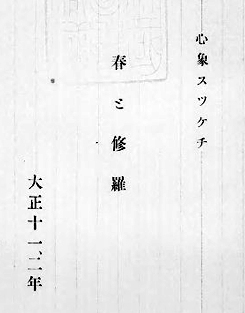Underglound
From Simon Garfield's 2011 Just my type, page 118 (the part about Japanese designer Kōno Eiichi's revision of Edward Johnston's typeface for the London underground):
The original Johnston Sans had only two weights, a regular and a bold. In time, Kono would design eight new ones — including a lighter face and a bolder lower case. [...] The battle won, Kono found a good way to signal his East Asian input on a London landmark: when he came to present his work for the first time he displayed his various New Johnston fonts with just one word: Underglound.
I tried to find more details about this, but was not successful. Garfield's book is popular non-fiction so individual facts aren't cited, and I can't see anything in his bibliography that obviously would be it. However, I did find this PDF of an article by Kōno himself with much more technical detail about what he actually did. (It looks like it might have been a talk he gave at Pen to Printer 2003.) There is a sample "Underglound" image in there, but Kōno doesn't explicitly say how (or even whether) he used it at the time; he just says "Only a Japanese designer can do this!"
(The odd thing is that, appropriateness of joke aside, "Underglound" seems to me a terrible demonstration word. The interaction of the l and the o create an optical illusion that makes the whole second half of the word looks like it's misaligned, resting just a hair lower than the first half.)
![[No-sword]](http://no-sword.jp/images/site/no-sword_banner.jpg)



